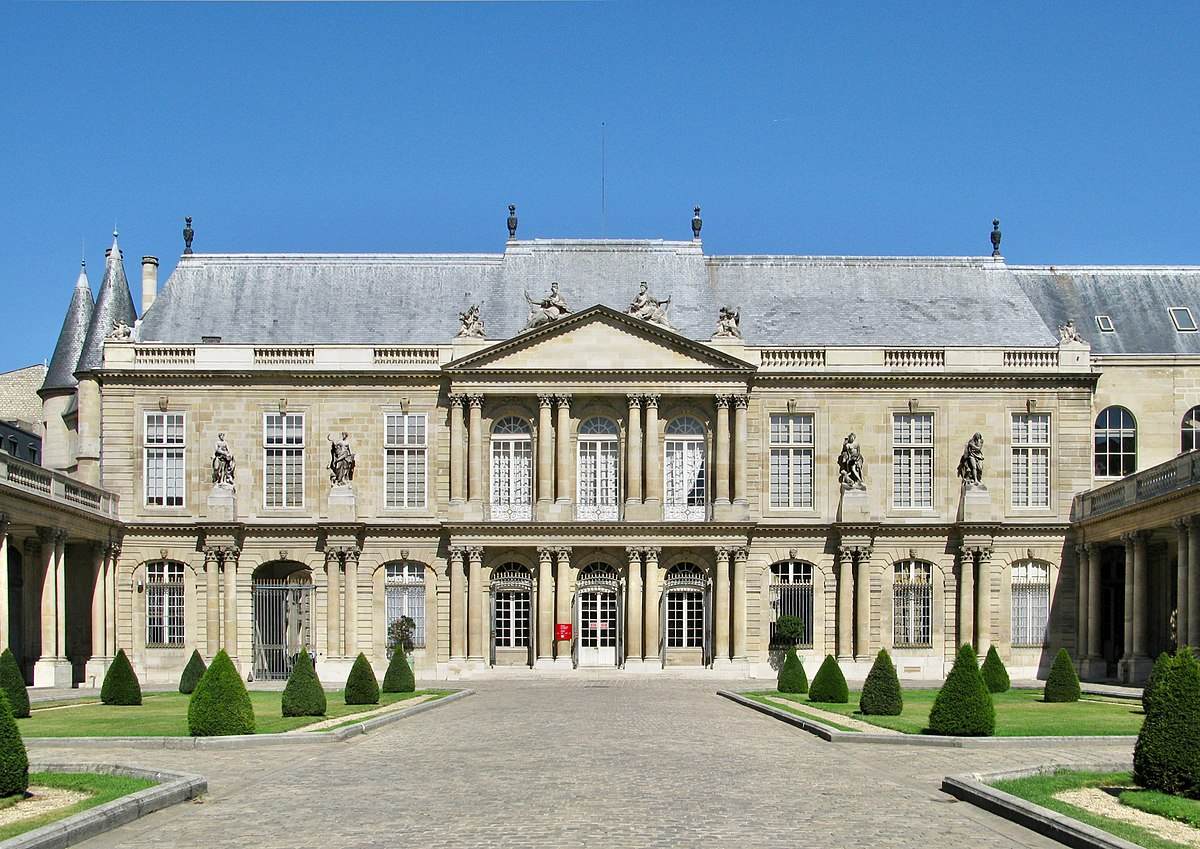French architect. He was the son of Antoine Delamair, architect and contractor to the Royal Works. He was involved with the embellishment of the city of Paris, and in 1699 he submitted designs for a pedestal for the statue (destroyed) of King Louis XIV in the Place Vendôme, Paris. In 1704 he began to build a town house at 142, Rue de Grenelle, Paris, for the Abbé de Pompadour; this was a single-storey building in which the articulation of the façade and sculptural decoration prefigured his later work.
At the age of 28 Delamair was brought to prominence by Cardinal de Rohan, Chief Almoner of France, who recommended him to his parents, the Prince and Princess of Soubise, for the most important architectural project of the time: the design of the Hôtel du Soubise in the Marais district of Paris (now the Archives Nationales). The former Hôtel de Guise was to be transformed into a princely residence, and the stroke of genius was Delamair's use of the old riding school as the cour d'honneur, surrounded on three sides by a colonnade of coupled composite columns that sweeps round in a curve behind the screen wall to the street, while at the other end of the court the motif of coupled columns is carried across the façade of the house, thereby achieving a closely interrelated composition.
At the same time, Cardinal de Rohan commissioned Delamair to design a new town house at the end of the garden that extended in front of the main façade of the Hôtel du Soubise. Beginning in 1705, Delamair erected a vast building of 13 bays, with a central columned frontispiece. On the side of the Rue Vieille-du-Temple this was linked to service wings, which bounded a cour d'honneur that ended in a semicircle. Delamair also produced designs for the interior layouts of the two hôtels, for the staircases and for the decoration of the apartments.
Cardinal de Rohan continued to favour him for his own residence, but the Rohan-Soubise family considered his scheme, involving pieces en enfilade with doors on a central axis, to be old-fashioned and soon transferred its patronage to Germain Boffrand. Anxious to stake his claim to the work, Delamair specified in his accounts of the sums due to him that the purpose of the document was to 'provide definite evidence for posterity that the works mentioned…were the results of his designs'.
In his writings, Delamair provided a list of other buildings for which he was responsible, including houses and hôtels in Paris and châteaux in various regions of France, but it is difficult to determine to what extent these were actually completed. He is known, however, to have rebuilt the Hôtel de Duras (destroyed) in the Faubourg Saint-Honoré, Paris, and was very proud of some of his solutions for the arrangement of the appartements en enfilade and for the construction of French-style stoves. Among the memoirs and statements that were intended to protect the authorship of his architectural and technical achievements are an album of his Oeuvres d'architecture, which he dedicated to the Elector of Bavaria, whose patronage he was seeking, and La Pure Vérité. A major work on town planning, Le Songe et le réveil d'Alexis Delamair (1731), which he dedicated to King Louis XV, was lost in the fire at the Royal Library in 1871.
Delamair's work was characteristic of the style at the end of Louis XIV's reign, displaying a love of monumental architecture articulated with columns and pediments and adorned with numerous sculptural figures; he skillfully introduced frontispieces and designed staircases of magnificent grandeur. However, the heavy influence of the style of Versailles in the layout of his apartments lost him the favour of the Soubise family and reveals his inability to adapt to changing tastes.
//
![]()




